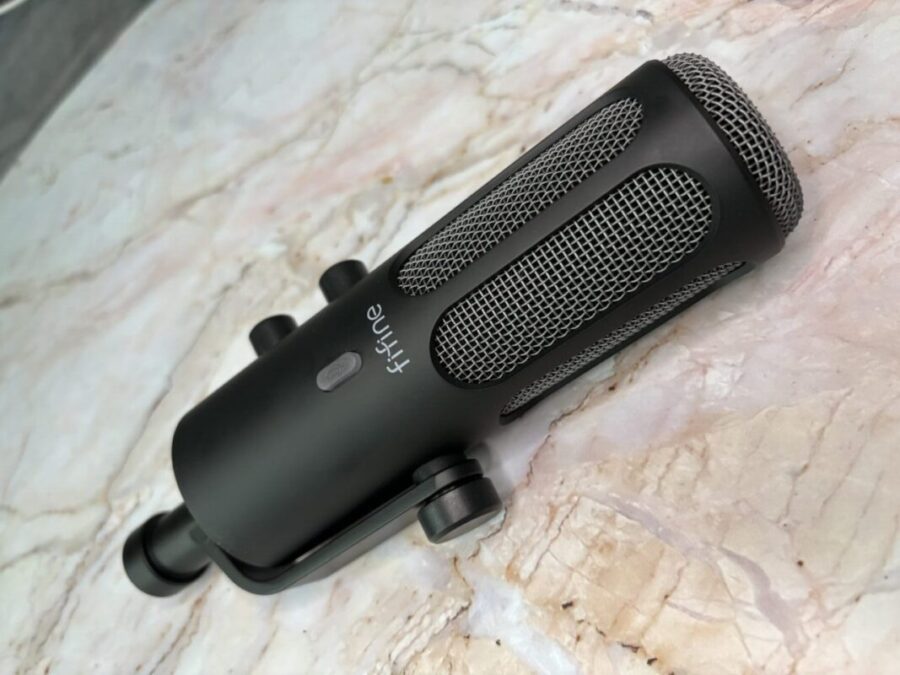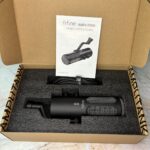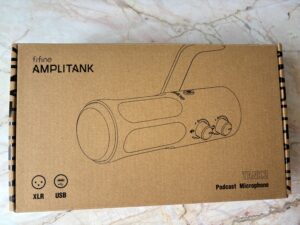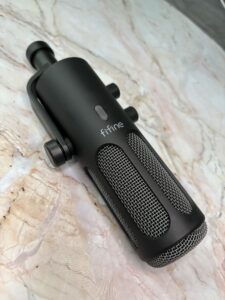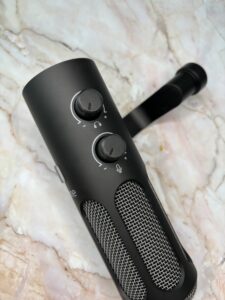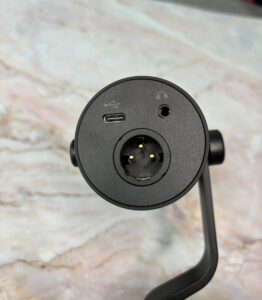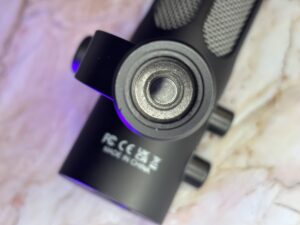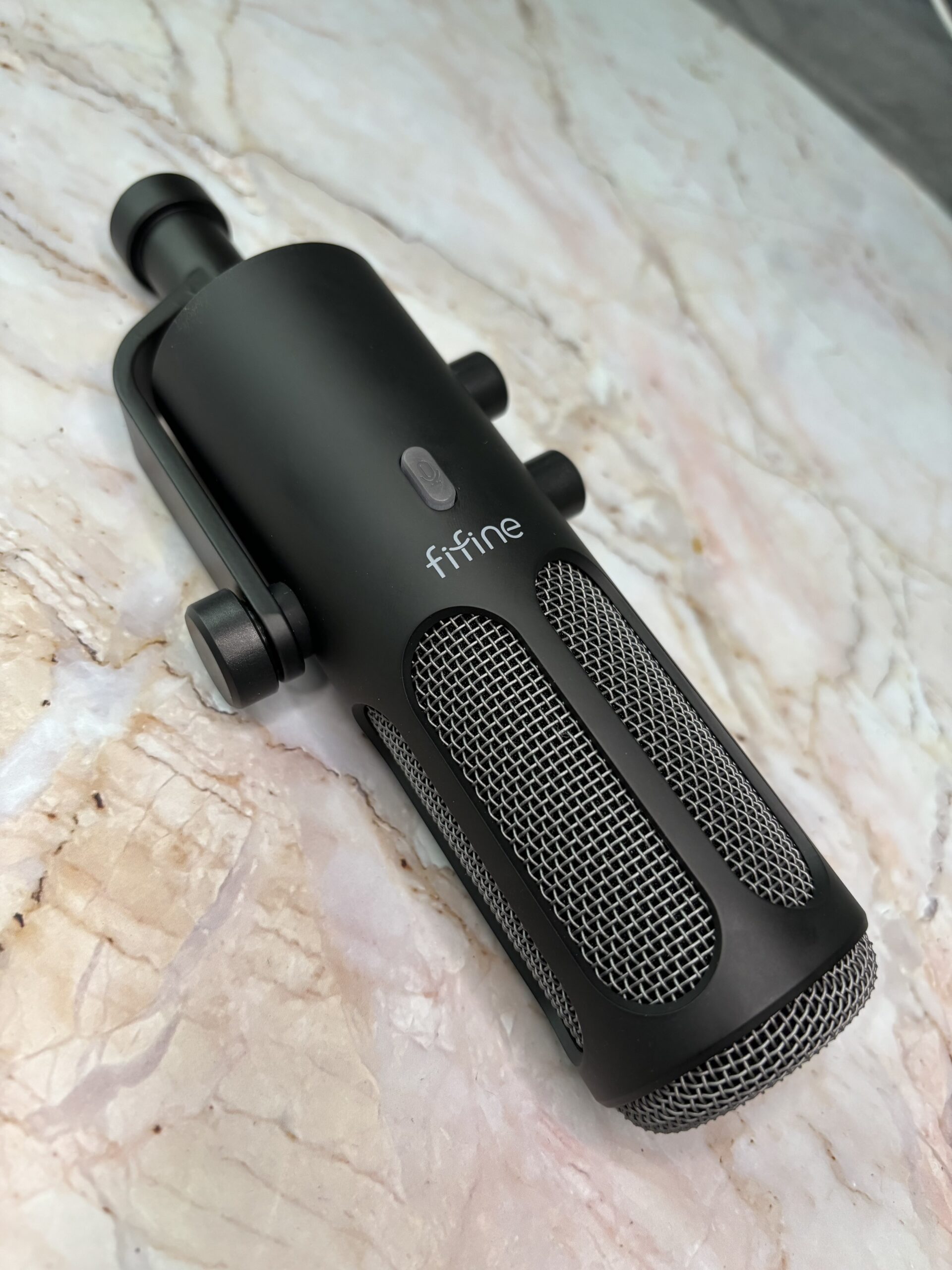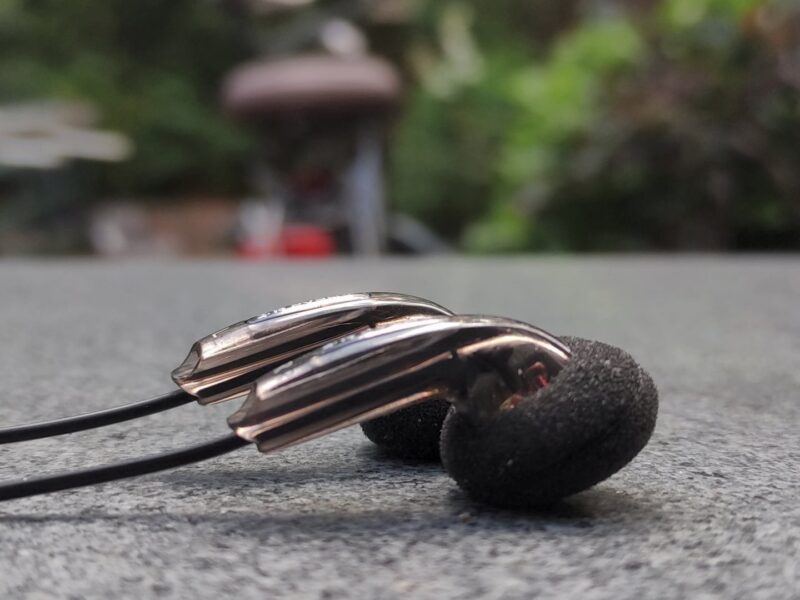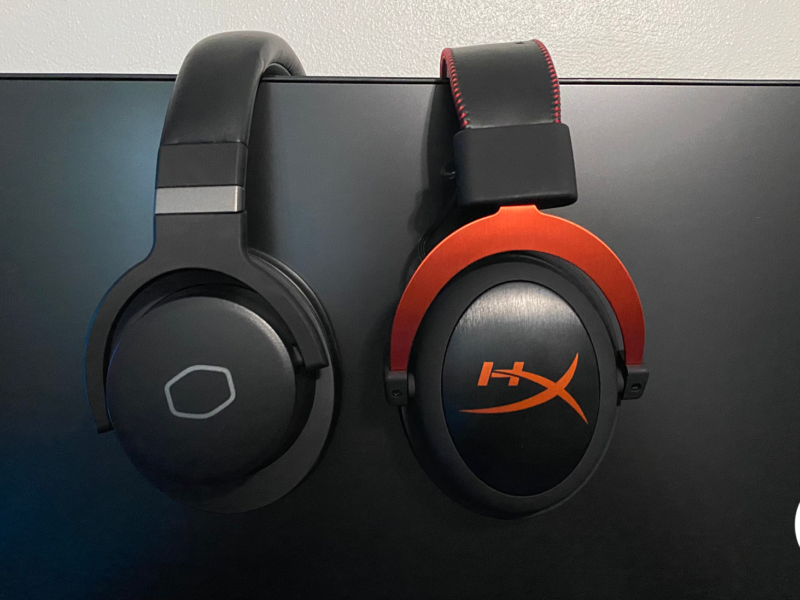Introduction
Fifine is a company that has, in recent times, spiked in popularity amongst budget conscious consumers trying to get the most bang for their buck when it comes to microphones. I have used my fair share of microphones from different manufacturers, including many of Fifine’s offerings, so when they reached out to us offering a review sample of the Fifine Amplitank Tank 3, I was eager to try it out. At a price tag of $89.99, is the Fifine Amplitank Tank 3 any good, and is it worth buying? Let’s find out.
Unboxing
The Amplitank Tank 3 comes in a simple cardboard box with an outline graphic depicting the microphone itself. Upon opening the box, you’re met with a foam insert containing the microphone itself, a handy user’s guide, and the included USB-C to Type A cable. The packaging is simple, and there is little plastic waste to speak of. The included USB cable’s quality seems to be decent.
The best way to describe the Aplitank Tank 3’s packaging is “minimal”, it’s not overly flashy, nor does it really do anything to stand out, it has everything you need and nothing you don’t. I don’t have much complaints about the unboxing experience, outside of wishing there was more put into the presentation of the box itself, to make the unboxing experience feel more ‘premium’, like Fifine’s AM8, A8, A6, and K688 offerings have.
Build Quality and Design
The first thing this microphone does right before you even plug it in is build quality, this microphone is built like a tank. The Amplitank Tank 3 is built using a solid piece of aluminum, it feels nice to hold, the matte finish looks nice, though susceptible to fingerprints, and the included yoke’s quality is also great.
The mute switch located on the front face of the microphone is tactile and feels nice to use while being able to not be picked up by the microphone during normal use. The included gain and headphone monitoring knobs feel alright, they’re made out of a decent feeling plastic and I have no issues with them. The mute switch toggles between two colors: Green for active, and Red for inactive (muted), the light is sufficiently bright and is very hard to miss. I really appreciate the inclusion of a physical button for the mute switch, other microphones like the Fifine K688, use a capacitive touch switch for toggling mute, and while this does eliminate the possibility of the muting action being picked up by the microphone in many cases, it’s always a hassle making sure the microphone actually muted as there isn’t any tactile response.
My first, and really only complaint with the Amplitank Tank 3’s design is its choice to integrate the 3/8 mount into the interior of the 5/8 mount. While I appreciate that Fifine isn’t wasting any excess materials by including a 5/8 to 3/8 adapter, it can possibly limit your options in terms of stands and arms you can mount the Tank 3 onto, as it requires the 3/8 mount to be pretty long for proper seating. This is really not a big deal, but for quality of life and maximum compatibility, it would’ve been nice to have a 3/8 to 5/8 adapter, which many mics already come with. Another minor complaint is the lack of an included windscreen, though this isn’t a big deal, as the mic handles plosives well regardless.
Specifications
Specifications are taken from Fifine’s Product Page. We don’t have the capabilities to test for frequency response, however Fifine did send us a frequency response graph. Of course, take all manufacturer provided information with a grain of salt. Real-world testing of the microphone should suffice to give us a good look at how the microphone will actually perform in use.
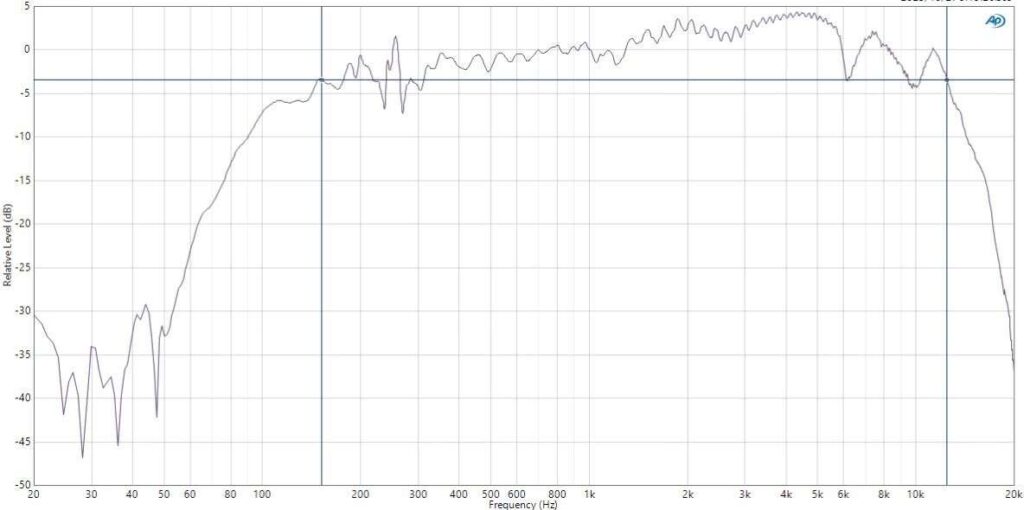
| Type | Dynamic |
| Polar Pattern | Cardioid |
| Output Connection | USB type-C (mic end) to type-A 2.0 (computer end)/XLR |
| USB Power Consumption | Voltage: 5±0.25 V Current: 100 mA |
| Bit Depth/Sample Rate | 16-bit/44.1k-48k Hz |
| Frequency Response | 50-16k Hz |
| S/N Ratio | >80 dB |
| Max. SPL | 120 dB |
| Sensitivity | -50±3dBV |
| Headphone Monitoring Jack | |
| Impedance | >16 Ω |
| Output Power | 10mW |
| Frequency Response | 20-20k Hz |
| S/N Ratio | 95 dB |
| Shipping Weight | 1.3 kg |
Performance
For the performance testing, I will be comparing the Fifine Amplitank Tank 3 to the Logitech Blue Sona, and the FDUCE SL40. The Blue Sona is being used for comparison as it is the microphone I personally use as my daily driver.
The FDUCE SL40 is typically my go-to recommendation for USB microphones when microphones like the Marantz MPM1000U aren’t available.
The Logitech Blue Sona is the only microphone being tested using XLR, all other microphones will be tested using their USB modes, this is mainly to show how the microphones perform at their baseline USB mode, which a majority of users are likely going to opt for. None of these microphones in my experience really benefit too much from XLR mode as their built-in ADCs and preamps are quite good anyways, the Logitech Blue Sona is an XLR-only microphone, if it had USB functionality, I would be using that instead.
The audio interface I will be using for the Blue Sona is Fifine’s SC3, a budget friendly option that performs nice for the price.
Fifine Amplitank Tank 3
Logitech Blue Sona
FDUCE SL40
From this comparison, it’s clear that the Logitech Blue Sona does perform the best of the three, giving a good, clear and full sound. The Amplitank Tank 3 comes in a close 2nd, also sounding very clear, almost on the same level as the Sona. The FDUCE SL40 noticeably has more compression despite running completely stock, some people tend to find this more appealing depending on the situation, but there is a small amount of distortion that’s introduced due to this compression.
The FDUCE SL40 also noticeably does worse with plosives, as they can clearly be heard during the Peter Piper tongue-twister. This seemed a bit strange to me, considering the SL40 has a windscreen that should at least help a decent bit with plosives, while the Tank 3 doesn’t have one and manages to handle plosives much better.
In my opinion, the Tank 3 makes the most sense out of this bunch, getting you very close performance to the Logitech Blue Sona, while retailing for $210 less. With an EQ, I believe that gap can be closed even further, as both the Blue Sona and the Tank 3 seem to be made with some audio tweaking in mind. Their flatter/balanced sound signature would allow for great customization, though they’re evidently more than serviceable stock.
Price + Feature Comparisons
| Fifine Amplitank Tank 3 | Logitech Blue Sona | FDUCE SL40 | |
| Price | $89.99 | $349 (MSRP) $299 (Amazon) | $99.99 (MSRP) $55.99 (Amazon) |
| Connectivity | USB + XLR | XLR | USB + XLR |
| Capsule Type | Dynamic, Cardioid | Dynamic, Cardioid | Dynamic Cardioid |
| Additional Features | Physical Mute Switch, Volume Control, Headphone Monitoring | Presence Filter, Bass Cut Filter, Included Windscreen, Additional Windscreen | Physical Mute Switch, Volume Control, Headphone Monitoring, Included Windscreen |
Conclusion
With the microphone market being flooded with many excellent budget options, does the Fifine Amplitank Tank 3 manage to perform well enough to stand out? It sure does!
While a tad bit expensive, the Amplitank Tank 3 has genuinely impressed me with its sound quality and overall build quality. I found the Amplitank Tank 3 to have a nicer, more neutral and full sound profile compared to the competitors. I find the performance difference between the Amplitank Tank 3 to not have been wildly different to the Logitech Blue Sona, and when asking others for their opinions on the Tank 3’s quality, most people told me they couldn’t even tell I had switched from my Blue Sona, which is great to hear, considering the Tank 3 retails for $210 less than the Blue Sona’s current price on Amazon.
While I still think the FDUCE SL40 is a great alternative to the Tank 3, especially for those with much deeper voices, or prefer the more compressed feel, there is no doubt that the Tank 3 punches above all other mics used for comparison. I believe with an additional EQ + filtering on the microphone, the Amplitank Tank 3 would make for an excellent budget microphone for content creators and gamers alike.
